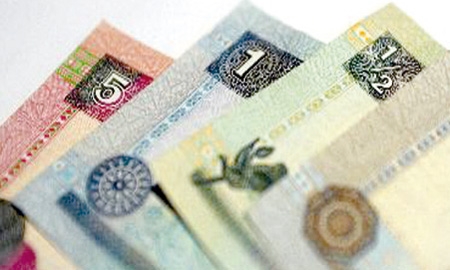
Because approximately half of the projects to be developed under the KDP will require financing, there will be big opportunities as banks vie to provide credit lines. The Kuwait Stock Exchange (KSE)—the second-largest in the Gulf—will mirror the new economic activity, says Hamed Saleh Al-Saif, director general of the KSE.
“The Development Plan will modernize the country and this will greatly affect the stock exchange. Industrial, real estate, and services companies will be involved in this project either directly or indirectly, and that will be immediately reflected in the KSE. Importantly, foreign investors can also get involved in this huge five-year spending drive, which in turn will also be reflected,” he explains.
There have been significant changes to Kuwait’s Stock Market in recent years, with the introduction of a new NASDAQ OMX automation system, which brought the system up to international standards.
Most important in the capital markets was the introduction of the Capital Markets Law, and the resulting establishment of the Capital Markets Authority (CMA), which began operating in March. Described by Ahmad Al-Haroun, outgoing Minister of Commerce & Industry, as “a major push for Kuwait’s comprehensive economic development,” the CMA acts as a regulator of the exchange and bonds market, leaving the management duties to the KSE and increasing overall efficiency.
| KUWAIT’S BANKS STAND BEHIND THE KDP, FINANCING THE PROJECTS THAT WILL TRANSFORM THE COUNTRY INTO A REGIONAL COMMERCIAL HUB. |
“Everyone was asking for this for a long time,” comments Majeed Essa Al-Ajeel, chairman of Burgan Bank, one of Kuwait’s fastest-growing banks. “This is the part of the new legislation which is needed in order for Kuwait to develop into a financial center.”
According to Michel Accad, CEO of Gulf Bank, the second-largest conventional bank in Kuwait, the CMA “is an attempt to bring a bit more governance, transparency and regulation. I think this is to the advantage of the minority interests in various companies that will be listed. This is extremely positive and it should attract more people into the Kuwaiti market.”
The KDP aims to inject an estimated $104 billion into the economy, and institutions such as Gulf Bank and Burgan Bank are fine-tuning their services to cater to incoming investors and partners.
“A lot of the development work will be undertaken by foreign companies that have the expertise, like foreign construction companies,” says Accad. “They will need local partners both on the technical front and on the financial front. We’re developing our project finance and corporate finance team right now; we’ve hired world-class talent to lead this new unit in Gulf Bank. We can contribute a lot in terms of advisory and corporate finance.”
So far, Gulf Bank has already invested in many of the newly awarded projects, raising its market share from the bank’s standard 13% to 30%.
In 2008, Gulf Bank suffered a run-on-the-bank after a derivatives trade lost it approximately $1.3 billion. With government support and a clever restructuring deal, however, the bank has made a comeback. It posted nine-month profits in 2010 of KD10.4 million, owing to improved loan and investment portfolios and better market conditions.
Today, Gulf Bank’s strategy revolves around four pillars. “One is to refocus on our core retail and commercial banking competencies. Another is to strengthen our balance sheet by being more aggressive on the provision side and having strong capital and liquidity,” explains Accad.
“A third is to ring-fence our legacy problems and manage the ‘bad bank’ separately from our profitable business. Lastly, we want to provide superior services to our customers by empowering our people and improving our business processes.”
The lender has long prided itself on its strong customer focus, which Accad attributes to the bank’s concentration on a single country with a limited set of products.
In contrast, Burgan Bank is rapidly expanding abroad and is the majority shareholder in four banks in the Middle East and North Africa (MENA) region: Jordan Kuwait Bank (with branches in West Bank and Cyprus), the Bank of Baghdad (the leading private bank in Iraq), Gulf Bank Algeria (with nearly 20 branches) and Tunis International (also licensed in Malta). This has raised its number of branches in the MENA region to more than 130 and has placed Burgan at number four in terms of price-earnings ratio and investments in Kuwait.
“The vision of the group as a whole is to take Burgan to the next level and to develop it locally and internationally,” says Al-Ajeel. While the bank’s expansion falls right in line with the Emir’s vision to reposition Kuwait as a regional financial hub, it is also contributing to the growth of the Kuwaiti economy. So far, it has financed over $725 million for the first phase of projects related to the KDP, and the bank’s main focus for the following years will be to increase finance and facilities for its clients taking part in KDP projects.
Founded as a government bank in 1977, Burgan Bank was privatized in 1998. Its majority shareholder is now KIPCO Group, one of the biggest diversified holding companies in the MENA region.
With all said and done, Burgan Bank’s strategy and vision is taking the company forward in a positive way. “We’ve increased profits elevenfold in the first quarter of 2011, compared to the same period in 2010,” remarks Al-Ajeel.
0 COMMENTS